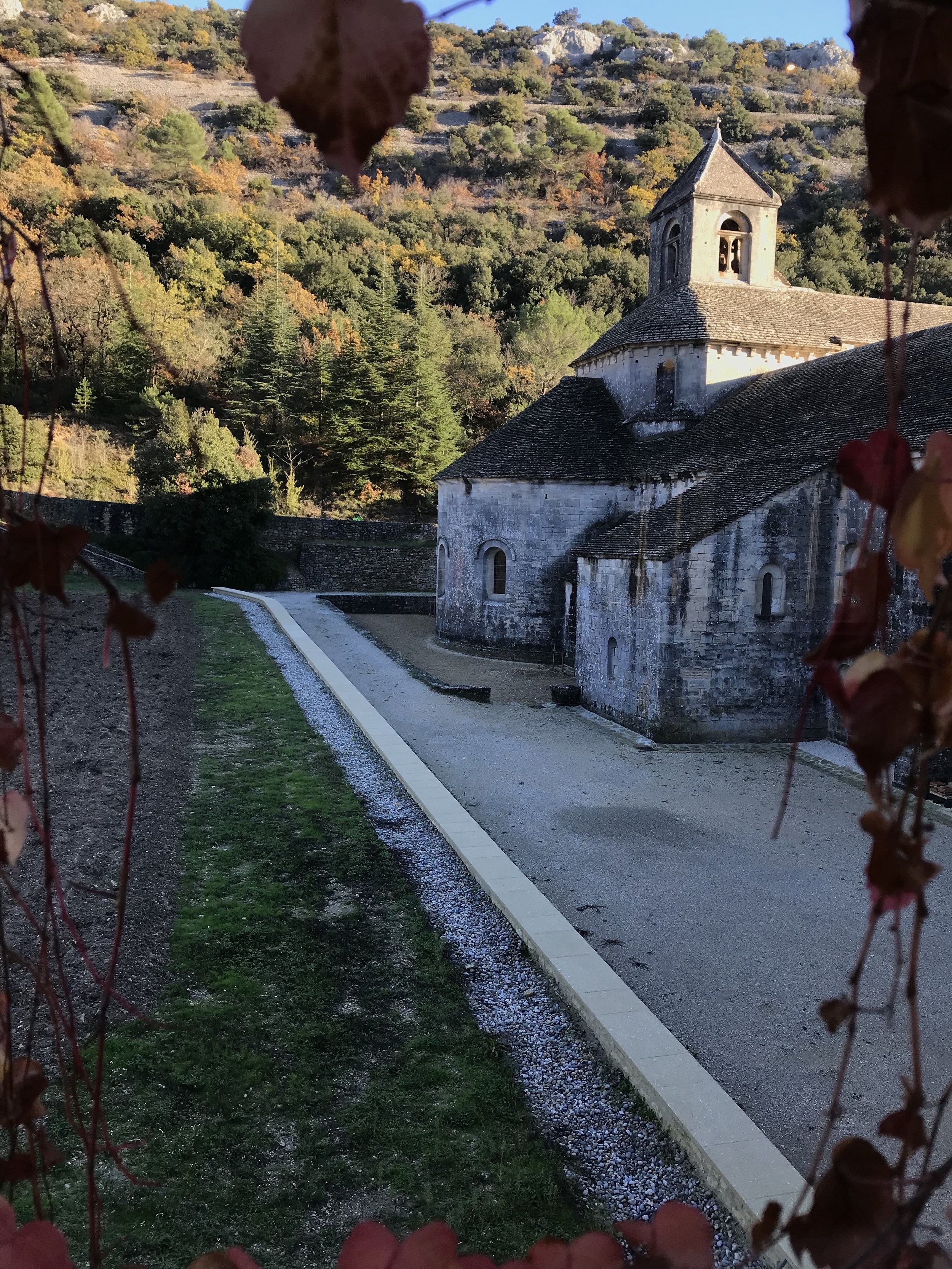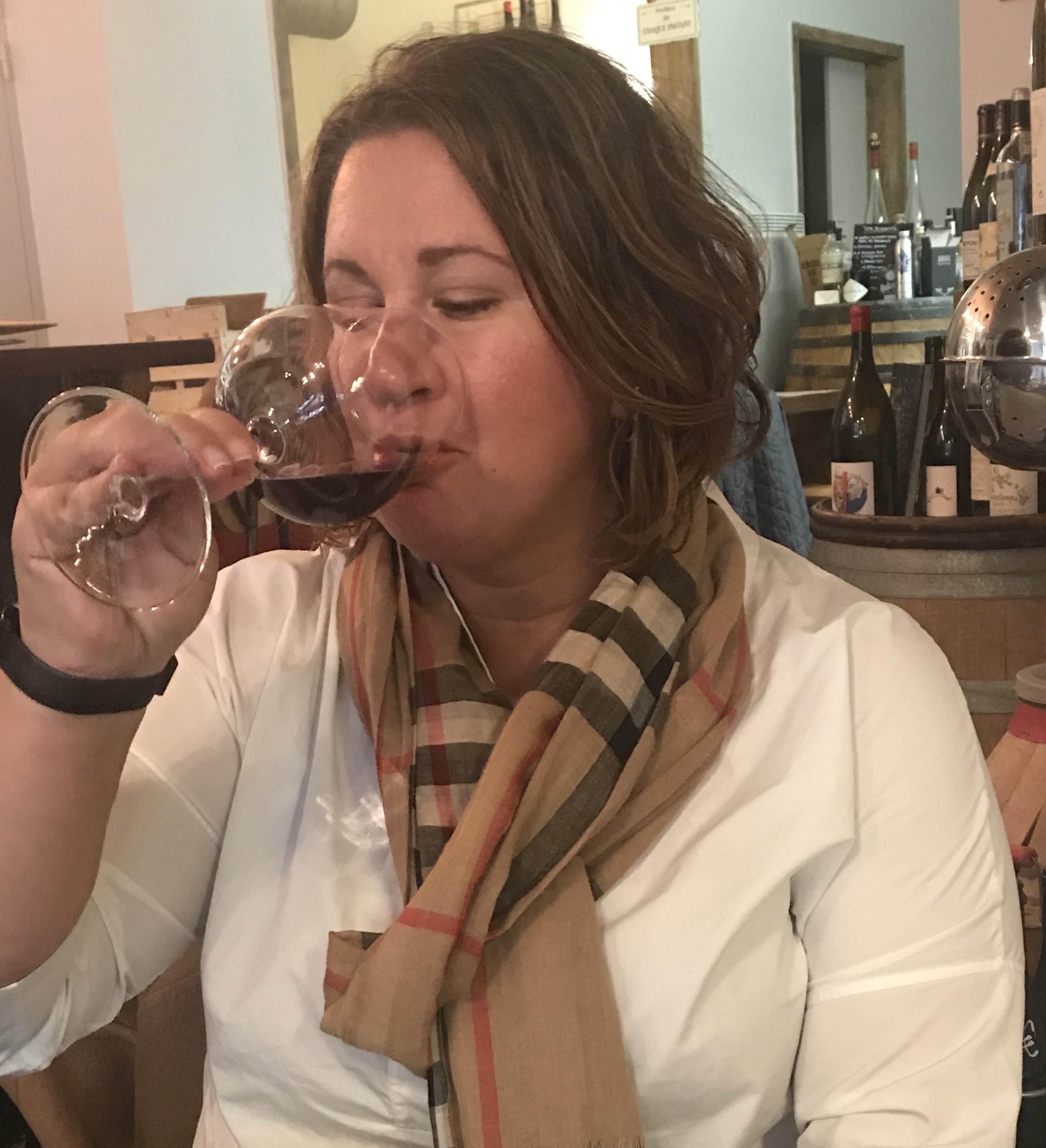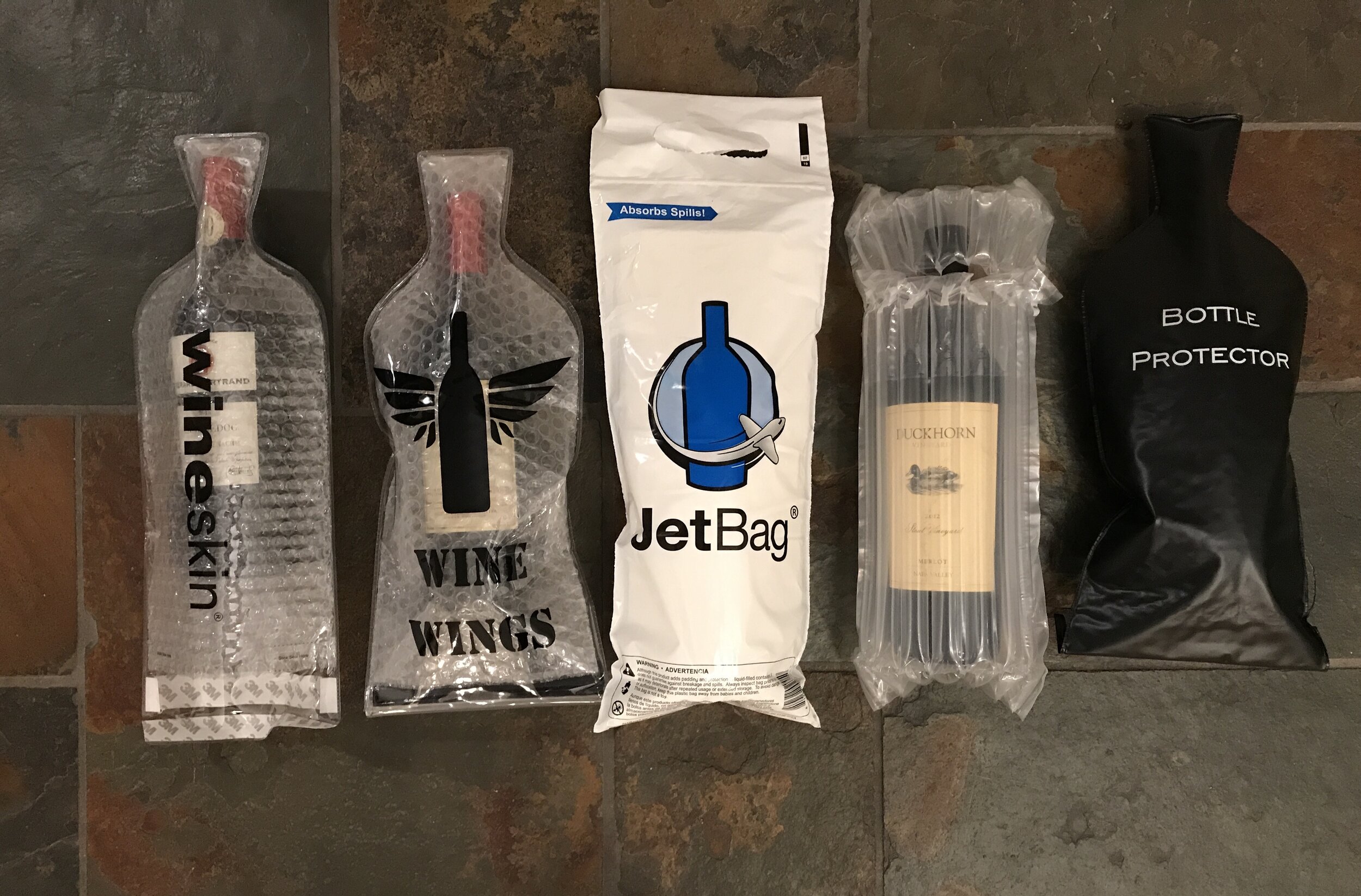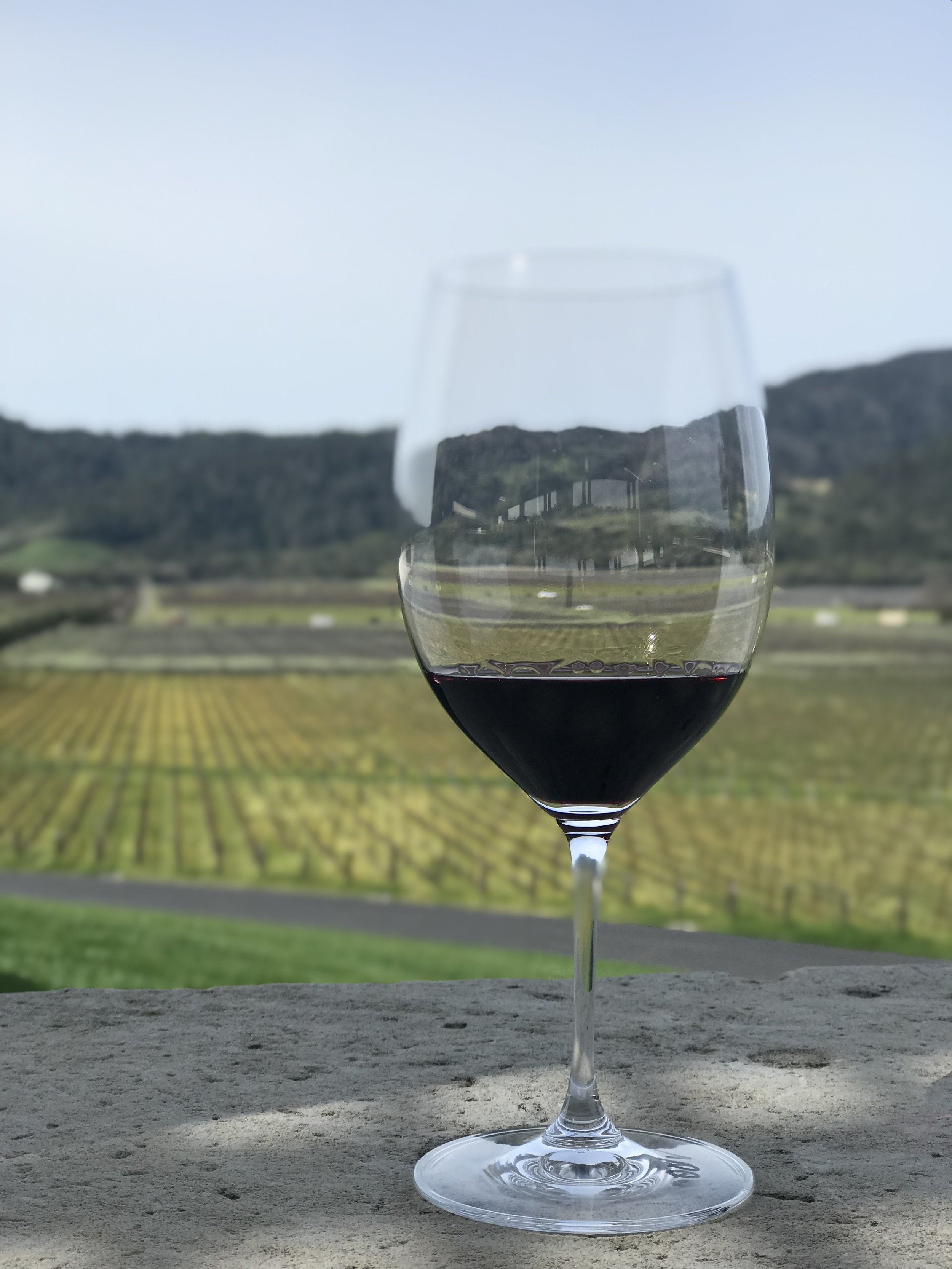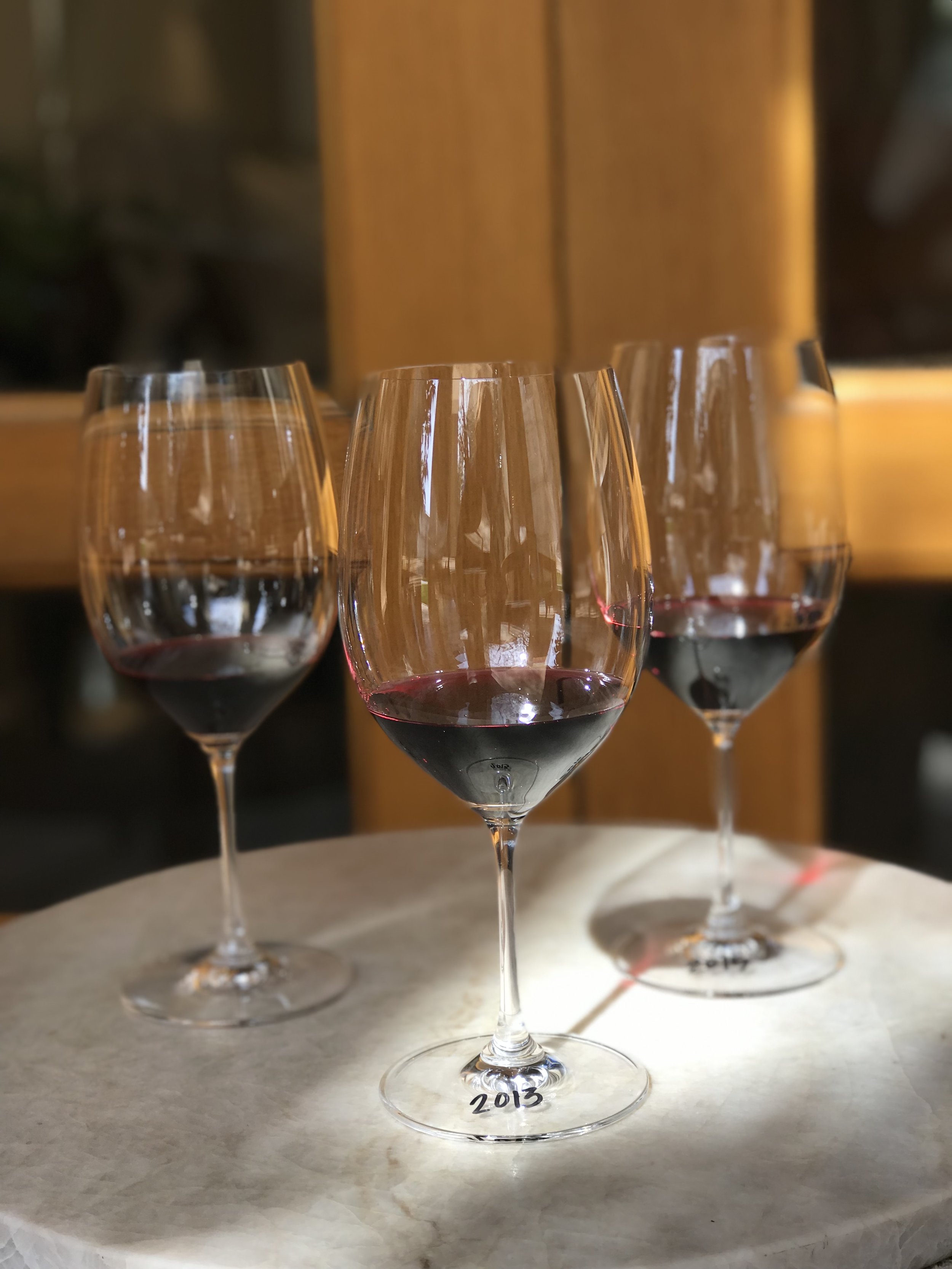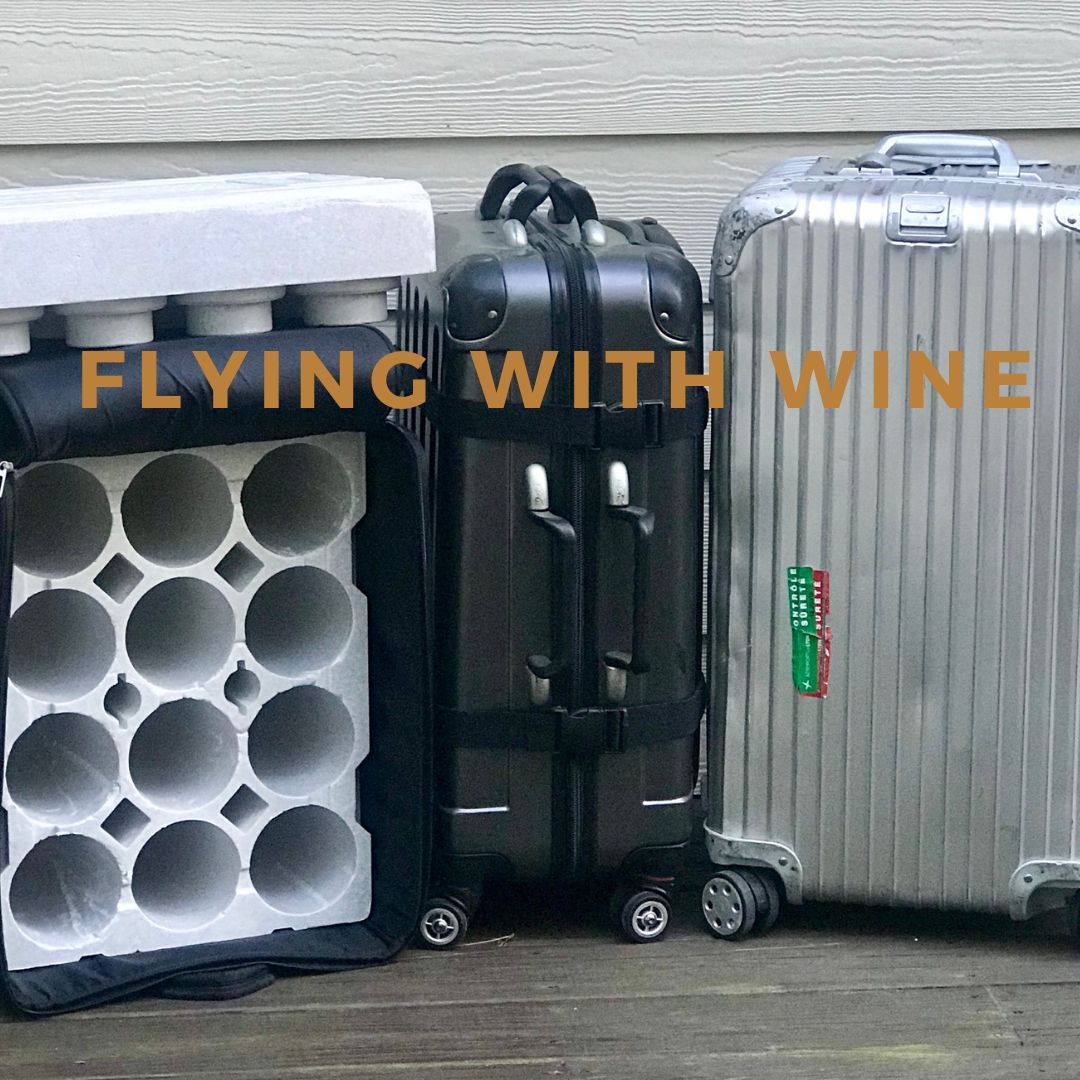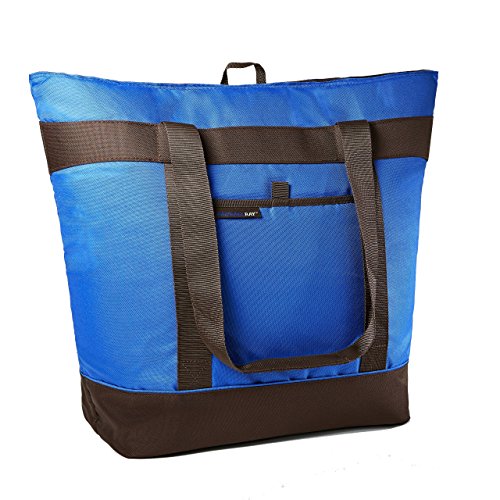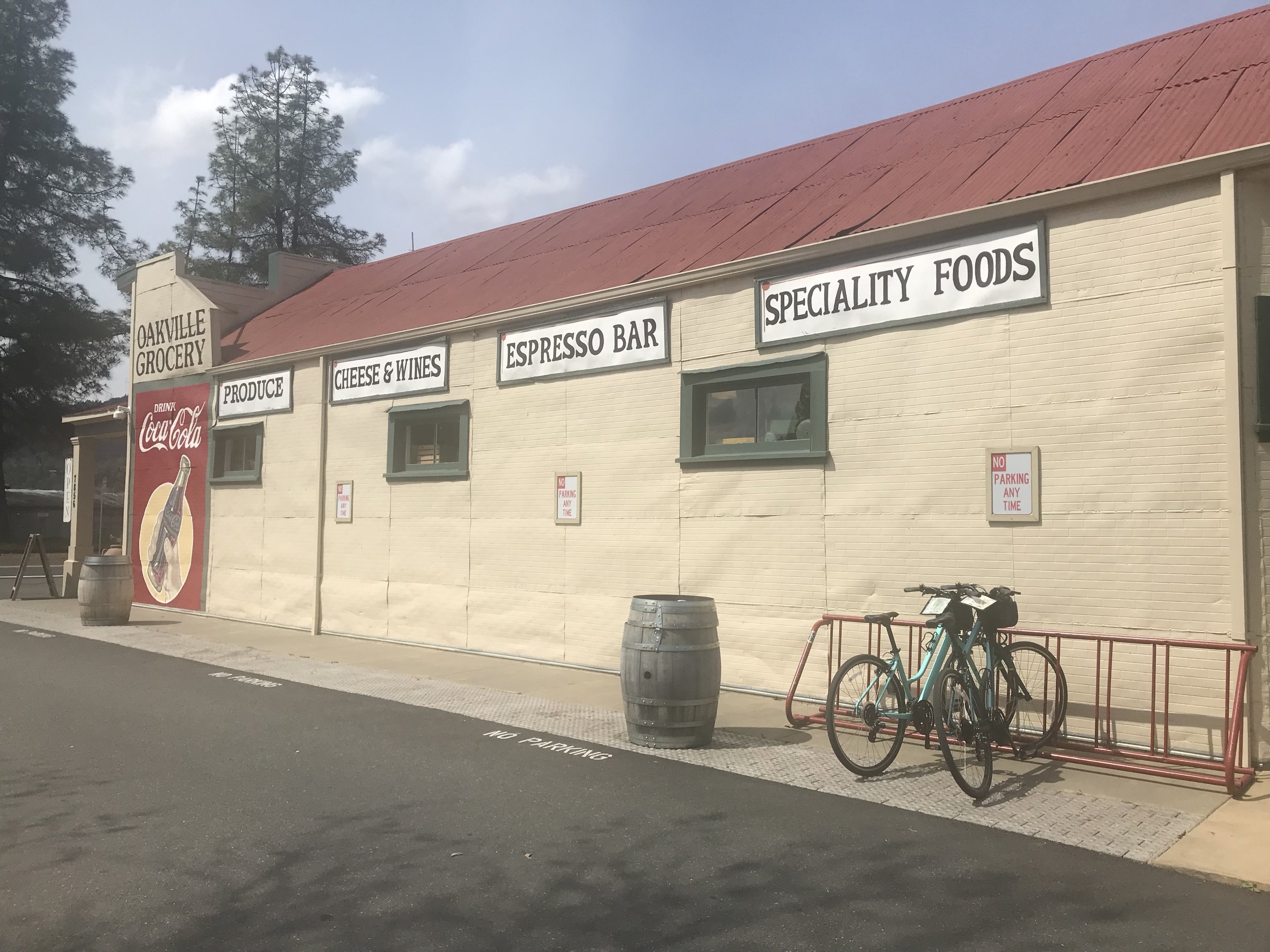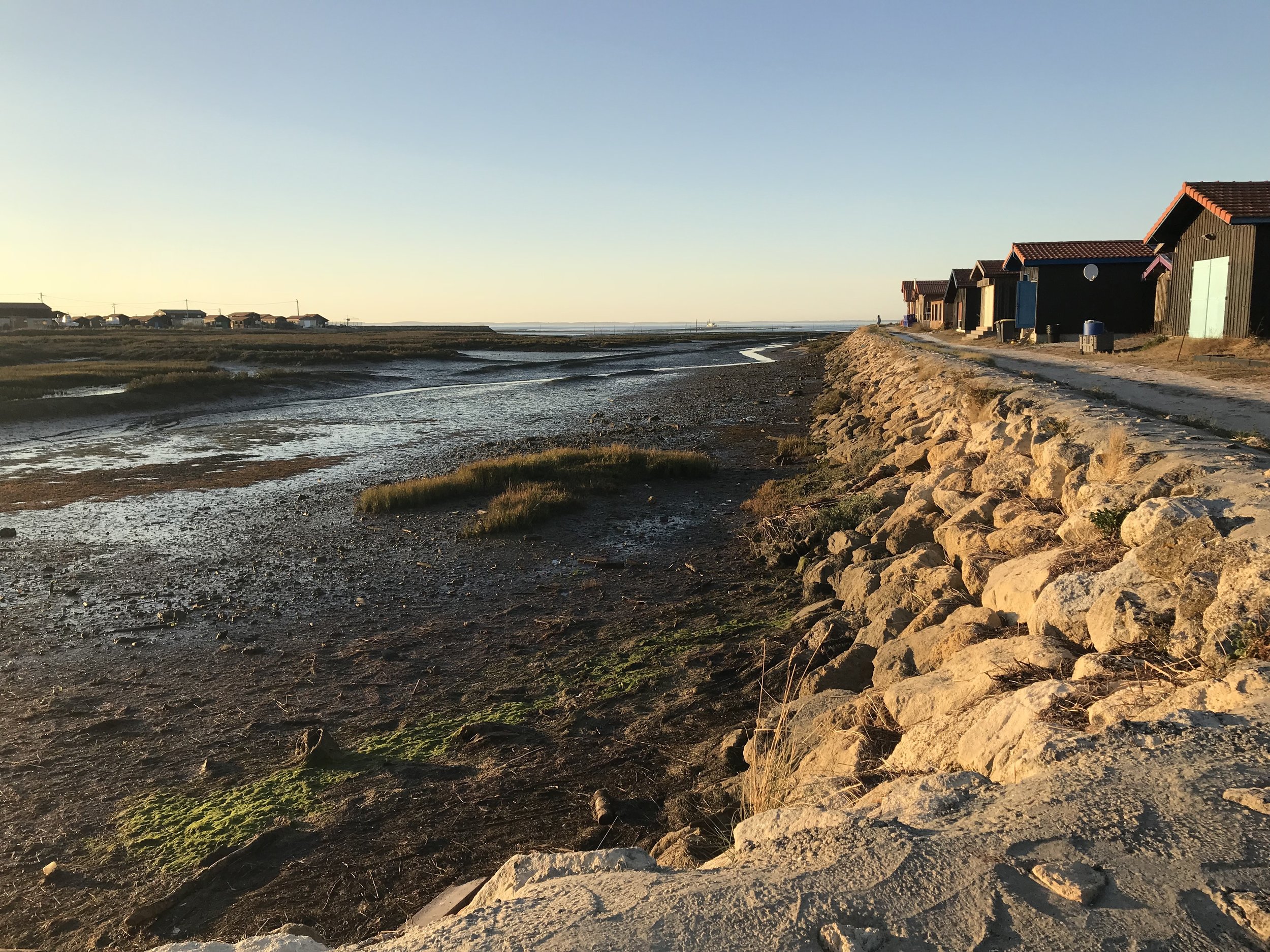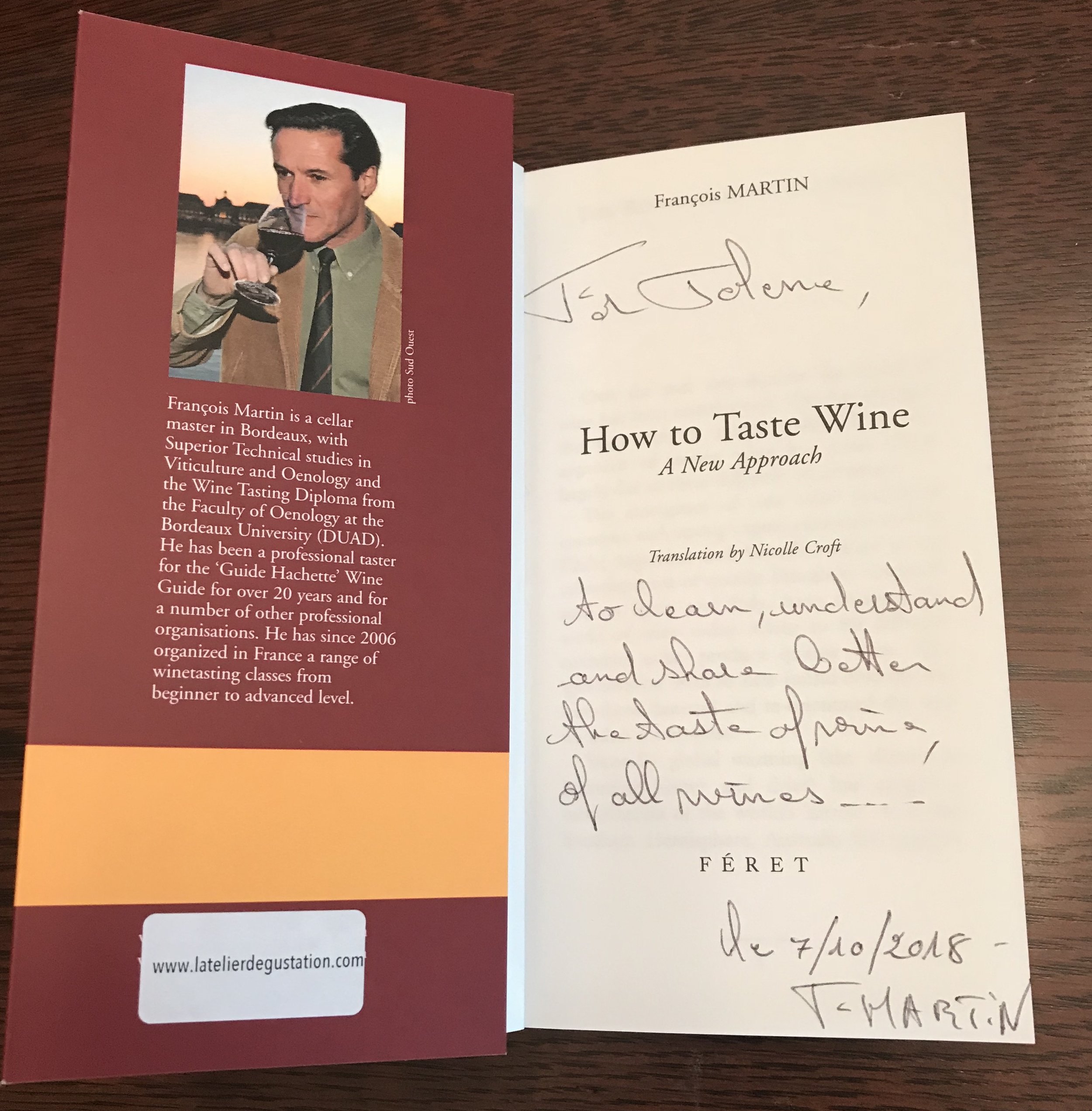Even though wines of the Rhône Valley are quite popular, the region is frequently overlooked as a travel destination by wine enthusiasts because it lacks an abundance of the posh hotels, spas, Michelin star restaurants, and elegant wine bars that one associates with other wine regions of France. The Rhône region is best described as bucolic — in the north the vines grow precipitously on steep hillsides flanking the Rhône River, while the south is flat and broad, with panoramic views of countryside and idyllic villages. Our travel to this region was full of exciting tastes and sights, and we review them all here.
Before we continue with our review, though, a little about the KnowWines blog. We are an Amazon.com affiliate and we do receive a small commission if you purchase items through our affiliate links at no cost to you. The commissions we receive help us pay for web hosting fees, products to test, and other costs associated with running this site. Thanks for using our affiliate links and supporting our independent blog!
Rhone Style Wine - What Does it Taste Like?
Wines of the Northern Rhône (Syrah, Viognier, Marsanne, and Roussanne) have increased in popularity in recent years with sommeliers and wine enthusiasts. Syrah, which has romantic aromas and flavors such as blackcurrant, raspberry, dark cherry, peppercorn, chocolate, smoke, coffee, braised meat, and campfire, has become especially popular. This combination of dark fruits and primal aromas has also attracted the attention of California winemakers called the “Rhône Rangers” who seek to replicate this attraction in the New World. Vines in the Rhône Valley were growing well before they were domesticated for wine production. As early as 600 BC, Greeks used the Rhône River to move goods and established viticulture in the Southern Rhône. Today, the Rhône Valley is the second largest AOC (Appellation d’origine contrôlée)* area of wine production in France. There are approximately 195,400 acres in production and 6,000 grape growers.
Recommended Books on Best Rhone Producers
If you’re intersted in doing a little homework on Rhone wines before your trip, we have a few favorites to share. In addition to highlighting the best-known producers in the region, as well as some off-the-beaten-path and emerging wineries, these books provide lodging and dining recommendations that will help you in planning your Rhone travels. Happily, these books lack the B.S. that can be found in some wine guides. In addition to helping plan travel, these are good guides for helping you in purchasing Rhone Valley wines online.
Northern Style Rhone Guide
Northern Rhone Guides Wines and Vineyards are outlined by Master of Wine Benjamin Lewin. This is a collection of one-page overviews of wine producers that can be used to plan your trip - or use it to make an impromptu visit as it outlines wineries that accept drop-in visitors.
Southern Style Rhone Guide
Southern Rhone Guides Wines and Vineyards format covers trends and producers in the Southern Rhone. This book is similar to the Northern Guide, but it covers the South.
Atlas Outlining Vineyard Terrains and Granite Soils
This award-winning book was the basis of several of our visits. These authors write in such a way that you feel like you are traveling with them as they visit vignerons and walk through the vineyards.
This award-winning book was the basis of several of our visits. These authors write in such a way that you feel like you are traveling with them as they visit vignerons and walk through the vineyards.
Best Time for Traveling to the Rhône Valley
Late October and early November are great times to visit wine regions in the Northern Hemisphere — it’s what travel agents call shoulder season, meaning great rates on accommodations and quieter restaurants. Locals also recommended visiting in April and early May (before the French May holidays). Our founder Jolene and her husband Darren visited in November.
Where to Stay in the Rhône Valley
For her one week stay, Jolene selected a Bed & Breakfast in sleepy Saint-Laurent-des-Abres, which is about sixteen kilometers west of Chȃteauneuf-du-Pape and close to the Lirac and Tavel AOCs. The town has about 3,000 residents and easy access to the A7 for day-tripping. Check out the books listed above for specific recommendations!
Navigating the Rhône Valley
Need a Rhône River map? Here’s a great map, available online, to orient you to the AOCs of the Rhone Valley. It details the names of the famous wine-growing regions in the Northern and Southern Rhone, as well as the grape varietals that are allowed.
Sights and tastes of the Rhône Valley
Here are the highlights of their trip, straight from Jolene’s travel journal:
Galets in Châteauneuf-du-Pape vineyards
Tasting at VINEUM Paul Jaboulet Aîné
Here, in the village of Tain-l’Hermitage, we tasted six wines, including the iconic Hermitage “La Chapelle.” The cozy tasting room is also home to a wine shop featuring most of Frey’s wines, as well as a small bistro featuring cold meats and cheeses and three-course meals featuring local meats and produce. Caroline Frey, the daughter of Jean-Jacques, is the winemaker and viticulturist for Paul Jaboulet Aîné. We loved the charm and congeniality of this tasting room (and we always add bonus points for a female viticulturist!).
Walking tour through the Châteauneuf-du-Pape vineyards.
Here, there are thirteen grape varieties included in the red wine blends, and the soils are quite diverse. The terrain can change dramatically within just a few feet. The walk included navigating slippery galets ( round river stones) and rough limestone as well as traversing clay and sand. This region is known for the Mistral (a strong, cold, northwesterly wind sometimes reaching 115 miles per hour), and we’re not too terribly disappointed that we missed out on it during this visit!
Rhone Valley Wine Tours
In a word: yes! We recommend that anyone visiting a wine region for the first time hire a local guide for one or two days. A guide will help you hone in on your goals before the trip and will provide recommendations for the best producers, restaurants, and bottle shops. We went with Céline Viany of Le Vin à la Bouche Wine Tours. Céline is a sommelier and one of the first to organize wine tours in the Rhône Valley.
Here are the highlights from our tour with Céline:
The villages of Gordes and Roussillon.
Roussillon is famous for its red and yellow ochre cliffs. The ochre quarried from this area was one of the earliest forms of non-toxic pigment used by mankind and is still used today by artists using oil paints. Visitors can walk through these ochre quarries and admire the red and gold cliffs. There are also workshops, kilns, and a former ochre factory available to visit. Gordes, frequently called one of the most beautiful villages in France, is famous for its stacked stone architecture. These small houses were constructed by stacking limestone without the use of mortar. In the middle of the city is a castle — built in the 10th century and rebuilt again in the 15th century — that now serves as a town hall and museum.
Ochre cliffs in Roussillon
The Castle in village of Gordes
The Abbaye of Sénanque
The Abbaye of Sénanque,
Inhabited by Cistercian monks who have chosen it as their place of retreat, the Abbaye is famous for its lavender production. Founded in the 12th century, the abbey is a well-preserved example of early Cistercian architecture.
The Luberon AOC
This fairly new wine region (2008) resides within a park called the Luberon Regional Nature Park. This region produces 53% rosé, 26% red, and 21% white wines, and many of these wines are blends, not single varietal wines. Though it gets quite cool at night due to the proximity of the Luberon Massif, this is still one of the sunniest regions in France.
Le Domaine de Marie
This fifty-seven acre property near Ménerbes is owned by the second generation of the Sibuet family which got its start in the luxury hotel industry. They grow eleven different grape varieties in four different soil types at the base of the Luberon mountains, blending innovative technology and ancient techniques. Our favorite wine was the LE ‘ LE’ — a ripe black-fruit forward red wine made from 90% Grenache vinified and aged in oak barrels for eighteen months.
Domaine Les Goubert in Gigondas
Like the Luberon, the Gigondas AOC is also a hot sunny climate with cool temperatures at night. The cool nighttime air comes off the Dentelles de Montmirail, mountains that look like jagged teeth. Most of the wine produced in this area is a blend of Grenache, Syrah, and Mourvedre. Les Goubert Gigondas wine was a great value (under $20), with flavors of dark cherry, plum, blackberry, raspberry, tobacco, and oak.
Le Nez!
What a delightful place for lunch! As Le Nez means “nose,” this cozy wine bar in Gigondas is decorated with polaroid snapshots of noses (visit for a chance to immortalize your own!).
Domaine La Fourmone in Gigondas
The Vacqueyras AOC neighbors Gigondas AOC at the foot of the Dentelles de Montmirail mountains. In fact, La Fourmone makes wines from both AOCs. While the wines of both AOCs are similar (mostly Grenache, Syrah, and Mourvedre), we found the Vacqueyras red wines to be a little “meatier” than the wines from Gigondas with more leather, game, and truffle notes. Our two favorite wines from La Fourmone were Le Poèt Vacqueyras and Les Ceps d’Or Vacqueyras (both under $25!).
Domaine de Beaurenard
This was the last stop on our guided tour. The Coulon family has been growing grapes in Châteauneuf-du-Pape for seven generations and have been bottling their own wines for one hundred years. They grow all thirteen varieties permitted in Châteauneuf-du-Pape and since 2007 do their own massal selection in a single hectare plot to increase genetic diversity. The first wine we tasted at Domaine de Beaurenard was the Châteauneuf-du-Pape Boisrenard Blanc 2017 — flavors of brioche, pear, apricot, peach, cinnamon, and nutmeg that would pair well with lobster. The second wine was the Beaurenard 201, which was decanted for about an hour. This had flavors of jammy fruit, tobacco, sandalwood, leather, licorice, and pink pepper. The last wine was their Boisrenard Rouge 2016, with flavors of dark fruit, dark prunes, chocolate, licorice, and ash.
Throughout the visit, Céline freely shared her sommelier recommendations for each wine tasted, as well as the ideal drinking window for each wine. She also provided us several driving, tasting, and dining recommendations to keep us busy during the rest of our week!
It’s worth noting that a tour guide is also a designated driver who will know how to navigate from place to place, maximizing your time at wineries. Finally, if you plan to purchase wine during your travels, check out our guide on flying with wine!
We hope our experience will inspire you to travel to the rustic Rhône very soon! Interested in traveling to Napa Valley, Bordeaux, or Saint-Émilion? We’ve been there, too! Happy travels!
Cheers!
*AOC: Appellation D'origine Contrôlée, or “Protected Designation of Origin” is the French certification granted to certain French geographical indications for wines, cheeses, butters, and other agricultural products.









